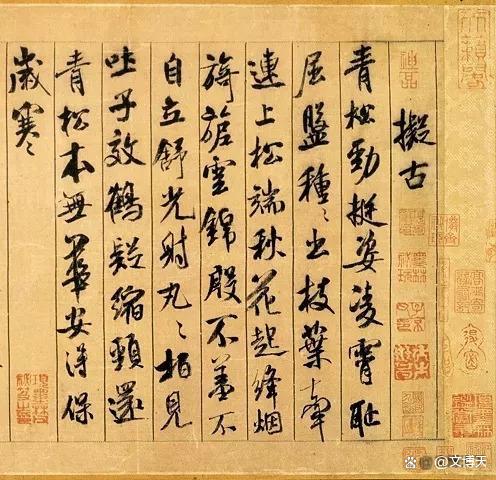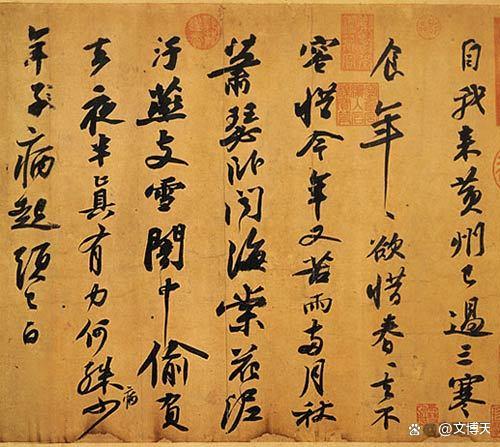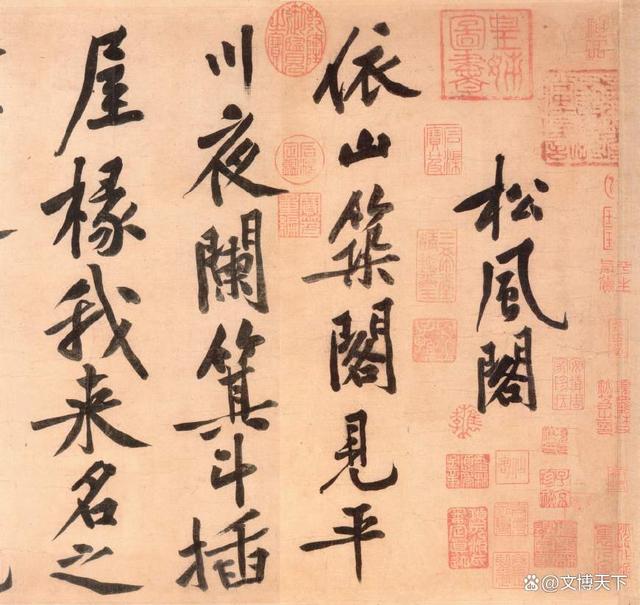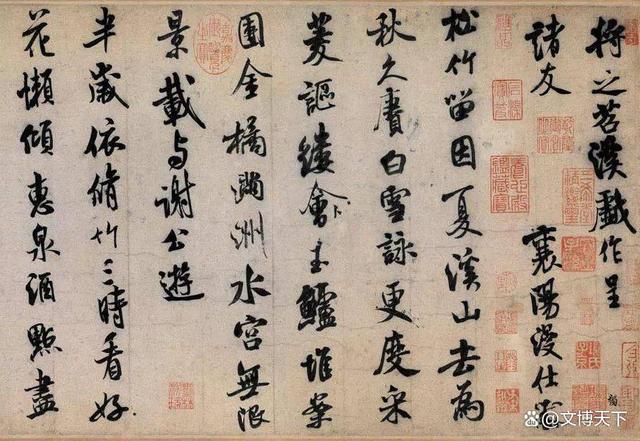What does it mean to have no fixed method of writing? What are the differences in the writing methods of Su Shi, Huang Tingjian, and Mi Fu?
The famous calligrapher of the Northern Song Dynasty, Su Shi, once said, "There is no fixed method for writing, but one should make it vague and broad." So, what do these two sentences mean in Su Shi's mouth?
Brush calligraphy has been deeply loved by the world since ancient times, and countless calligraphy masters have emerged in history. So, in what context did Su Shi propose the "indefinite method of writing"?

During the Northern Song Dynasty, with the popularization of high desks and benches, brushes also underwent changes, and the use of brushes was mostly the five finger holding method, which is now the most common form among people. However, the famous calligrapher Su Shi at that time had a unique style. He used a single hook brush technique, just like we use a hard pen now, using a brush. In the Song Dynasty, Chen Shidao once said, "When writing on Dongpo, it is advisable to use your hand to touch the case and keep your wrist still." This means that due to Su Shi's use of this writing method, his wrist did not move when writing. You can try this method, but the result must be that his wrist could not move. Because of this, Huang Tingjing once said, "When writing on Dongpo, it is more appropriate to use your hand to touch the case and keep your wrist still, so the left side is beautiful and the right side is withered."

In fact, the single hook brushstroke method was not unique to Su Shi. According to research, calligraphers during the Jin and Southern and Northern Dynasties periods used the single hook brushstroke method, while calligraphers during the Tang and Five Dynasties periods also mostly used the single hook brushstroke method. The double hook brushstroke method was also adopted by some calligraphers. This is because before the Song Dynasty, there were no high tables or stools, and calligraphers generally held their pens with one hand and paper with the other, which was determined by the times.
Due to Su Shi's unique or unsociable writing style, many celebrities at that time ridiculed him. In this context, Su Shi proposed the theory that "writing has no fixed method.". In Su Shi's eyes, the quality of characters should not focus too much on the external form of the calligrapher's writing, but on the brushwork and the character itself. After Su Shi, who was already famous all over the world, proposed this theory, it quickly sparked a wave of various forms of writing. Mi Fu's brushstroke style is also quite unique. According to historical records, Mi Fu "pinched his five fingers together, as if flying gracefully." That is to say, Mi Fu used the pinching method, which means his five fingers naturally drooped and pinched the top of the brush tube.

Huang Tingjian, one of the "Four Masters of Song", adopted the popular five finger brushstroke method today. Generally speaking, the earliest form of the five finger brushstroke method can be traced back to the Five Dynasties period. Li Yu, the later ruler of the Southern Tang Dynasty, once proposed the "seven character method" for brushstroke in "Shushu". This "seven character method" can be seen as the predecessor of the five finger brushstroke method, but it is worth noting that this method is still somewhat different from the five finger brushstroke method. Therefore, it can also be said that the Five Finger Writing Method did not become popular until the Song Dynasty.
In addition to the single hook, pinch, and five finger pen holding methods mentioned above, there are many other pen holding methods such as double hook, twist tube, and grip tube. Among them, the fist shaped grip tube method was popular in the Han Dynasty and before, but it was rarely adopted later. The double hook method was popular for a long time and almost coexisted with the single hook method, with a large number of fans in the Tang Dynasty, Five Dynasties, Song, Yuan, Ming, Qing, modern, and modern times. The writing style of Emperor Qianlong, Mr. Shen Yinmo, Mr. Qigong, and Mr. Shu Tong in the Qing Dynasty was the double hook method.

During the Qing Dynasty and the Republic of China period, the way of writing was the most free. In addition to the above methods of writing, there were also more ways of writing. For example, in the later years of the Qing Dynasty, He Shaoji used the wrist style writing method, while during the Republic of China period, calligrapher Zheng Xiaoxu used the four finger double hook method.
It can be said that how to use a brush is not about having a standard answer, but choosing the way that suits oneself. The brush and the way it is used are just external forms, and the words presented by the brush and ink are the key to judging the quality of calligraphy. So, which method do you use?









